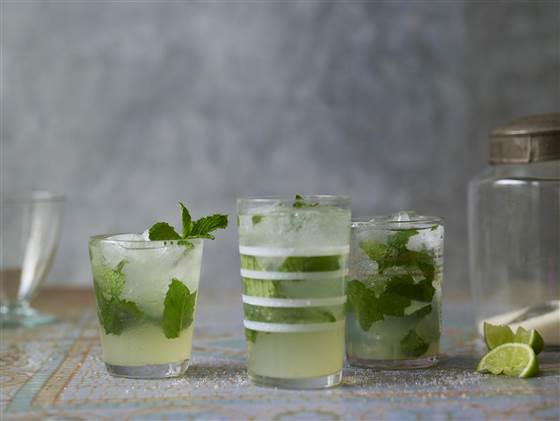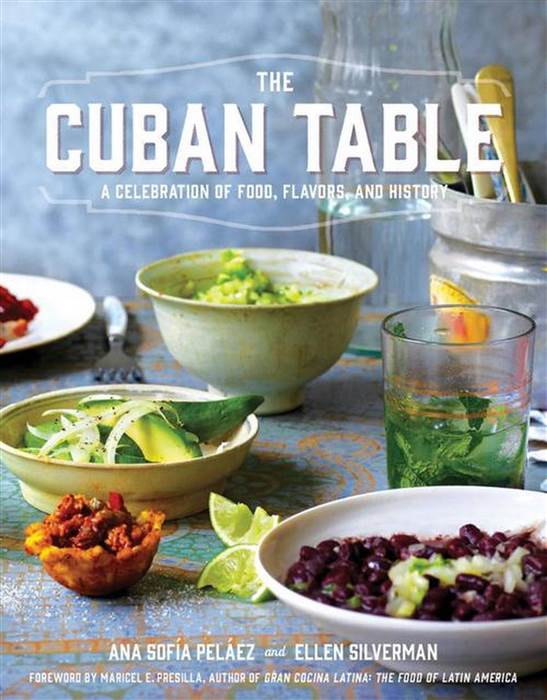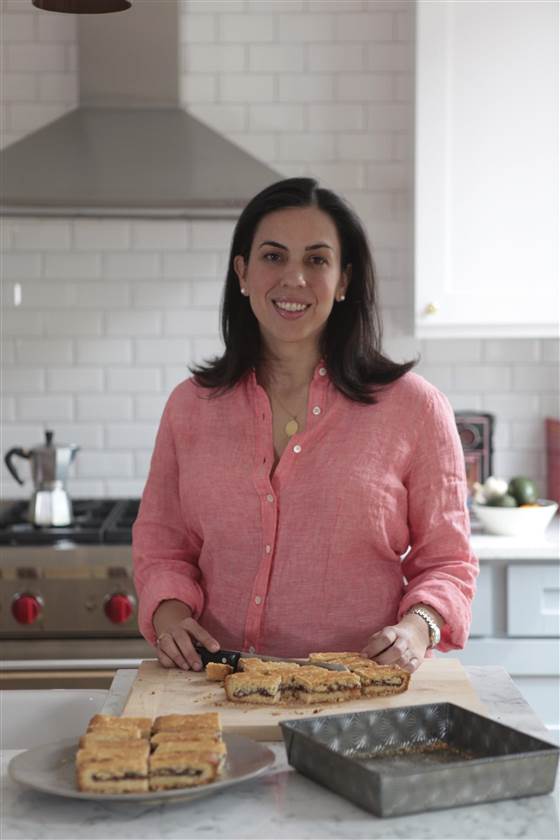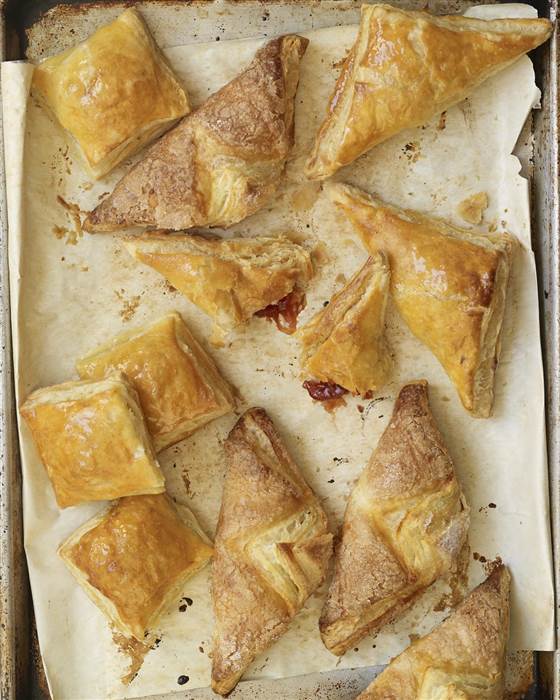
“The Cuban table”: A savory trip through Cuba, Miami and NY
For Ana Sofía Peláez, author of The Cuban Table: A Celebration of Food, Flavors, and History (St. Martin’s Press), writing a cookbook was the ultimate collaborative project. The original idea for the book came from photographer Ellen Silverman, who was inspired after a 2010 trip to Cuba to create a cookbook that shared the recipes, stories and complicated history of the people who had welcomed her during her stay.
Enter Peláez, a Brooklyn-based Cuban-American writer and food blogger who was born and raised in Miami. The plan involved gathering actual recipes and stories from Cuban home cooks and professional chefs in New York City, Miami and Cuba.
The two did just that, spending months traveling, interviewing, and photographing their way through a multitude of Cuban kitchens, ultimately pulling together a prize of a book that does justice to a culinary story that for many is as painful as it is beautiful.
In our conversation, Peláez shared the process of uniting so many voices and stories into one cohesive cookbook, the challenges of recreating family recipes and the way she finally conquered her fear of that Cuban kitchen favorite—the pressure cooker.
Q: How did you find the people you interviewed for the book?
A: Nobody was safe around me for about a year and a half. Someone would casually mention that their grandmother made really good picadillo, and next thing they knew, I was on the phone with them every day getting the recipe.
I went to Cuba with names and letters of introduction from the people I talked to in Miami. Like I would talk to someone here, and she would give me her brother’s recipe, but he’s still in Havana, so when I got there, I was able to go and meet him. That was my starting point, and then from there it was just seeing what was next. There was always some clue that I could follow to the next thing.
Q: I imagine that in Cuba it is actually the most difficult to source ingredients?
A: It is. It was hard. When I was there, I always tried to be very respectful and not put too many demands on people. I didn’t want to impose myself on them because you know how hard it is to get even the basics. So much time and planning goes into preparing a meal that you can’t take it for granted. When I was there, I’d make a point of scheduling my visits between meal times so that they wouldn’t feel any obligation to feed me. And you have to be really careful what you ask for – once you do, they’ll find a way to make it happen, even if it’s a sacrifice.
Often it was easier at the paladares [privately-run restaurants], because it was the midway point between a professional restaurant and a home cook. You could actually be a customer and it was easier to work with them because you knew you weren’t imposing. It wasn’t a family sharing with you from their limited resources, it’s a business and it’s something they are set up for.
Q: Were there any significant differences in your interactions with Cubans in the US and on the island?
A: In Miami, time is very limited. Scheduling things took forever, [people] have grandkids visiting, or they have to study, or they have work. There are lots of demands on their time. Once I was finally able to schedule something though, it would explode! It would grow exponentially with friends and neighbors coming over – I would go there to work on a recipe, and find it had become a huge party.
In Cuba they have the time we don’t have here. That is what they could offer…time and information. They could sit with me for hours and tell me stories. They could answer all my questions. I never took it for granted that they were going to be able to cook for me or share anything with me. The stories were enough.
I found that no matter where I was, everybody gave me something valuable. Everybody had something to offer, which is really lovely.
Q: How do you go about translating family recipes into something that works for a cookbook?
A: Some of the people I interviewed were professional chefs or otherwise worked with food, and could easily speak to what they did. But for others, it was really just about watching and cooking with them. One friend’s mother measured everything with a ladle, so finally I was just like ‘give me the ladle,’ and figured out it was an exact cup. She was always very precise in the way she did things, she just never had a reason to take actual measurements.
I wanted to keep some idiosyncrasies as much as I could just because I think that’s what makes each dish special. Like so many of the recipes started with a sofrito, and I could have just made one for the whole book, but everyone had their own special take on it and it was more important to me to not lose that.
Q: How does cooking Cuban food where you live in New York City differ from cooking it in Miami?
A: At its root, so many of the dishes are made from such simple ingredients that they can be reproduced anywhere. That said, it’s definitely easiest in Miami where you have every tropical ingredient imaginable, and the access and ability to buy it at any regular grocery store. I grew up there and that’s where it started for me. I just spent weeks there going into every store and restaurant I had ever been to growing up. I tried to speak to everyone.
In New York you can definitely get everything you need, but you just need to cross barriers a bit. All these communities have similar foods; you just need to figure out how to translate things. You use the Puerto Rican word because there are more Puerto Ricans here, or you go to the Italian market because the bread is similar. The people that work behind the butcher counter are Latin American so they understand and can help me, but again the words are a little different. And then there’s Chinatown. It’s the first place here that I found real sugarcane. I still remember I was so excited when I saw it!
Q: Anytime you write about traditional recipes, it can be difficult because there are so many ideas about what the “right” way is. How did you deal with that challenge?
A: In my family, my grandparents were the ones who cooked and maintained the traditions, so going into it, I assumed it would be the same for everyone; that the real recipes would come from the older generation. But what I found is there are a lot of young people who maintain those traditions and it’s important to them as well. At first I thought I might have to update recipes to make them relevant, but these older methods and traditions are popular again, and people are already going back and seeking out things that were lost for a bit, so they’ve already made those changes.
Q: Did you adopt any uniquely Cuban cooking techniques while writing the book?
A: The thing I was most intimidated by was the pressure cooker. Everyone claims to know someone who lost an eye or a leg or an arm using a pressure cooker, and they tell you these terrifying scenarios, but then finish by saying ‘oh, but you should really use this.”
The thing that finally got me over my fear was a trick I learned from [one of the cooks] I interviewed. She uses the cooker like a regular pot, cooking everything in it, but only uses the pressure part for small portions of the cooking process to speed things up. So maybe for 15 minutes instead of a full hour. And it’s less scary, because you don’t have that idea in your head of how ‘oh my God, I’m going to have to leave it for an hour and it’s not going to have enough liquid and it’s going to explode.’
Q: Was there any unexpected place where you ended up getting a great recipe?
A: Definitely unexpected people. In Cuban families, the tradition is to give a copy of the cookbook “Cocina Criolla” by Nitza Villapol to the daughter when she gets married. But when my friend got married, her mother gave the book to her [American] husband because he was the one who was actually going to use it. The recipe in the book for papas rellenas (stuffed potatoes) came from him. He adds a lot of spices to the picadillo filling, and it’s really great. When she gave me the recipe, I tried it and said ‘oh my God…he is a really good cook!’ She said, ‘I told you!’ It’s the only recipe that came from a totally not-Cuban person.
Q: What has the response been from those who contributed to the book?
A: Everybody has been really great about it, and I hope that they’re happy and know just how much I appreciate the time that they gave me. I know that every recipe in there came from a family, and represents more than just a plate of food. People reveal so much of themselves and their history in their cooking. It can be a very unguarded moment, and I’m appreciative of the people who were willing to let me be there for that.
(From: NBC News)





